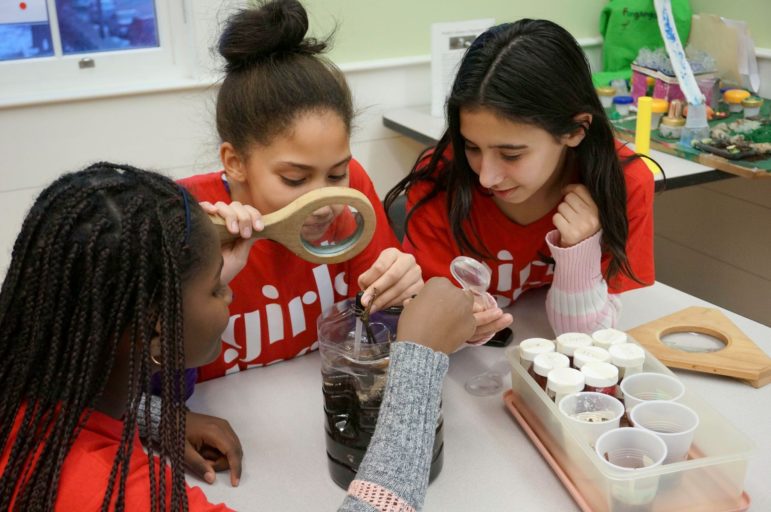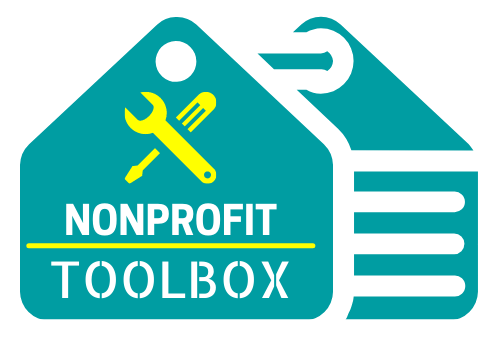
Girls Inc. of Greater Atlanta
Girls Inc. of Greater Atlanta partners with 16 schools in the metro Atlanta area. Here, students from Cobb County Schools do a science experiment in a Girls Inc. fall break camp prior to the pandemic.
School districts around the nation will receive $122 billion through the American Rescue Plan Act to help safely reopen schools and support students most impacted by the pandemic, with $22 billion earmarked to address learning loss. Leaders of after-school and summer learning programs are investigating how their organizations, which are also reeling from the pandemic, can tap into this aid, which is allocated nationally in stages.
“This is a time to tell our story of what we’ve been doing during the pandemic, and how we’re making plans to continue that support,” said Tiffany Collie-Bailey, CEO of Girls Inc. of Greater Atlanta, an affiliate of the national organization providing programming and mentoring for girls.
 Collie-Bailey, who recently addressed after-school and summer learning providers in a webinar sponsored by the Afterschool Alliance, urged youth-service organizations to develop or deepen partnerships with schools. “Our schools need us and we need our school partners,” Collie-Bailey said. “This is the time to find the village or create your village.”
Collie-Bailey, who recently addressed after-school and summer learning providers in a webinar sponsored by the Afterschool Alliance, urged youth-service organizations to develop or deepen partnerships with schools. “Our schools need us and we need our school partners,” Collie-Bailey said. “This is the time to find the village or create your village.”
She also urged organizations not only to collaborate with schools, but to take advantage of resources in their state after-school network. Collie-Bailey has practice in developing partnerships with schools. When she became CEO in 2018, Girls Inc. of Greater Atlanta had programs in three metro Atlanta schools. Two years later, the organization is working with 16 schools.
“Many times we would start with the school counselor,” Collie-Bailey said. But Girls Inc. also sent literature to the schools, emailed principals and contacted PTA leaders. Even parents became a resource when they recommended the program to teachers.
“Teachers’ voices have power and we need to be reminded of that,” she said. “You’re literally trying to work your way up to the person who is the decision-maker, and you start wherever you can start with and don’t be afraid.”
Recently, she reached out to Marietta City Schools, a suburban Atlanta district, to find out how the district plans to use its COVID relief funding. She learned school leaders are still in discussions, but are planning to expand programming dealing with students’ social and emotional needs. They intend to hire additional social workers and counselors, but are aware they would need to work with community-based nonprofits and after-school programs as well.
Collie-Bailey urged organizations to make sure schools have plenty of information about the organization’s work.
“Put together your menu of services,” she said. That may include partial services.
For example, Girls Inc. has an anti-bullying program it can bring to schools in addition to its regular programming.
For more on youth-related programs, research and resources, go to
► Youth Today’s OST Hub
The $22 billion earmarked for learning loss must address the social, emotional, and academic needs of students, particularly low-income and marginalized kids who have been most impacted by the pandemic, according to the American Rescue Plan Act. Interventions should be evidence-based and can be in after-school, summer, expanded day or expanded school year programs, the law says. The funding not earmarked for learning loss can be used for a wide variety of purposes, but they include mental health and after-school and summer learning.
In addition, the American Rescue Plan Act provides $12.2 billion for state departments of education across the country to share, with some part of that dedicated for after-school and summer learning programs. These funds will be disbursed at the state level.





























